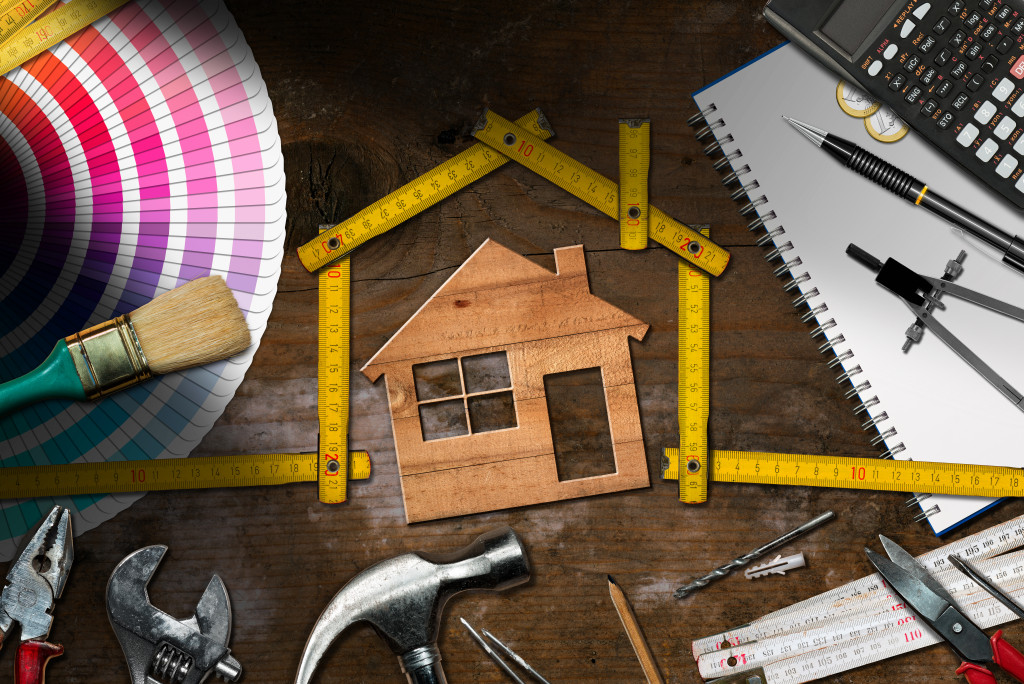- You can use the money from selling your previous home to finance the renovation of the new one.
- Home improvement loans in the form of a home equity loan or HELOC offer access to funds at a fixed or variable rate, respectively.
- Personal loans for home improvement can be another viable option if you have good credit.
- Utilizing credit cards for home renovations can be affordable if you can pay off the loan quickly.
- Government assistance in the form of an FHA 203(k) loan, USDA home renovation loan, or VA renovation loan is available to those who qualify.
Are you planning to move into a new home, but the house needs some renovations before you settle? Many homeowners may encounter this challenge, especially when buying an older home or a fixer-upper. Unfortunately, home renovation costs can add up quickly. To help you, here are various ways to finance home renovations that will assist you in getting the needed funds to get the house of your dreams.
1. Previous Home Funds
Your previous home sale funds can be used to finance your home renovation. If you are selling an old house, the proceeds from that sale can be used to fund the renovation of the new one. This is a great way to reduce the money you need to borrow. You might also consider using any savings or investments you made from the previous home sale to help fund your renovation.
But if you still haven’t, you can sell your old property now to release the funds you need to finance your renovations. You might consider using a cash home buyer service to get the best property price quickly. This will provide you with the funds you need to start your home renovation project without waiting.
2. Home Improvement Loans
Home improvement loans have existed for a long time and remain the go-to choice for homeowners. The two popular home improvement loans are home equity loans and home equity lines of credit (HELOCs).
a. Home Equity Loans
Home equity loans allow you to obtain a fixed amount of cash repaid over a set amount of time, usually with a constant interest rate. This means that the amount of your monthly payments will remain the same until you’ve paid off the loan.

b. Home Lines of Credit (HELOCs)
HELOCs are revolving debt with variable interest rates that allow you to borrow against your home equity when required and repay it over time. If you need a large sum, HELOCs may be your best option, as they can provide you access to up to 85% of your home’s equity.
3. Personal Loans
Personal loans for home enhancement can be a more feasible alternative if you have sufficient credit to access them. Personal loans, on average, have higher interest rates than home equity loans, but they give a good alternative for people that do not have a lot of real estate equity. You may get a personal loan anywhere from approximately $1,000 to $100,000, with fixed interest rates ranging from 6% to 36%.
4. Credit Cards
Credit cards may be an alternative solution for financing smaller home enhancement projects, but they are usually not the best solution for larger jobs. If you can handle to repay the loan quickly, using a credit card to finance home improvements can be a good and cheap option. Utilizing credit cards for home enhancements might come with interest-free options or rewards that can make your purchases even more affordable.

5. Government Assistance
Depending on the type of renovations required, there might be government programs that you can take advantage of to receive help funding your renovations. Many countries have different programs that offer financing for home renovations, so make sure to check with your local government. Here are some examples you might be eligible for:
a. FHA 203(k) Loan
This loan allows you to combine the cost of home improvements with a mortgage into one loan. The FHA 203(k) loan is ideal for homebuyers who need to cover both their dream home’s purchase and renovation costs.
b. USDA Home Renovation Loans
This loan allows you to buy a home that needs repairs or to finance needed repairs to your current home. The USDA Home Renovation Loan has two types: a Section 504 loan and a Section 502 loan. Depending on your credit score, some of these loans may have no down payment requirement.
c. VA Renovation Loan
The VA Home Renovation Loan is similar to the FHA 203(k) loan but only available to veterans and service members. This loan allows you to purchase a home and fund the renovations all in one loan. If you are eligible, you can finance up to 100% of the home’s purchase and renovation costs.
Regardless of the method you choose to finance your home renovations, always take a comprehensive look at your finances and insurance to make the best decision for your circumstances. You would be taking on additional debt to pay for home renovations, and ensuring that you’re comfortable with the repayment terms is crucial. By thoroughly exploring your choices and selecting the one that works best for you, you may make your dream home a reality.

